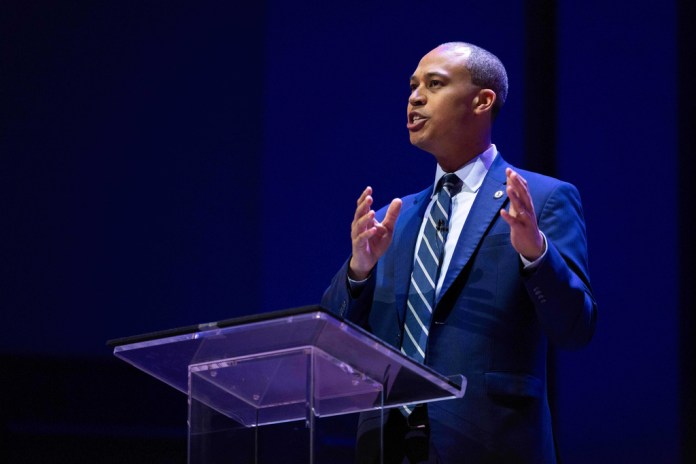Media Should Investigate Federal Waste, Not The People Finding It
The article discusses the findings of the Department of Government Efficiency (DOGE), which reveal important wasteful spending within federal funding, suggesting a potential need for thorough investigative journalism on these issues.It points out that conventional media have largely ignored this information, possibly due too their own financial ties to the government, having received millions in funding from federal sources.The piece criticizes the media for focusing on the relatively inexperienced young staff at DOGE instead of investigating dubious funding expenditures, such as an $8 million project aimed at teaching Sri Lankan journalists about gender issues.The author argues that the media should be scrutinizing the origins of this funding and examining the connections and responsibilities surrounding such projects rather than targeting the investigators themselves. Ultimately, the article calls for a deeper inquiry into government spending and accountability, suggesting that critically important questions remain unexplored.
The avalanche of wasteful spending uncovered by the Department of Government Efficiency (DOGE) is a mere hint of deeper secrets lurking within funky federal funding. Even a cub reporter knows the juiciest news is uncovered when you follow the money, but that is not where the legacy media are looking.
DOGE is highlighting spending information that is ripe for investigative reporting. A lot of this information has been readily available on the government spending website USAspending.gov, which was spurred to life in 2006 in part through the efforts of Federalist CEO and Co-Founder Sean Davis.
As the staffer who conceived of and wrote that law for Sen. Tom Coburn, the lead sponsor of the bill, I am not at all surprised to see what’s happening with USASpending. What’s happening right now is exactly what was intended from the very beginning. https://t.co/sbN6s44vEc
— Sean Davis (@seanmdav) February 7, 2025
The corporate media have had years to tell the public the extent of government glut, but why would they when they were on the take themselves, enjoying fat government handouts? As Federalist writer Logan Washburn recently reported, the federal government has paid Politico $34.3 million since 2015; Reuters, $10.6 million since 2020; The New York Times, $2.7 million since 2008; and $1.7 million to The Washington Post since 2014.
It is a conflict of interest for the media to receive money from the same government it is ostensibly covering. It’s hard to imagine a heavy-hitting investigation challenging spending such as “$8 million to teach Sri Lankan journalists how to avoid ‘binary gendered language,’” as Federalist writer Tristan Justice recently reported.
There is good news: The lazy media have a newfound curiosity. The bad news is that traditional media have turned their attention to the people investigating the federal funding. Instead of following the money, the left-wing media complex is following the money followers.
CNN just unintentionally made the funniest news segment of all time.
They reported on a 19-year-old DOGE staffer whose online name is “Big Balls.” 😂
pic.twitter.com/nH5JyGC6tp— George (@BehizyTweets) February 7, 2025
Wired Global Editorial Director Katie Drummond spoke with CNN host Erin Burnett about Wired’s “riveting” investigation into Edward Coristine, a 19-year-old hired for computer work at DOGE.
“Coristine’s online history, including a LinkedIn account where he calls himself Big Balls, has disappeared recently,” Wired reported, adding it is questionable if Coristine could get a security clearance to work in the government. Oh, and he started a business named “Tesla.Sexy LLC” when he was 16.
The horror. Bad taste, sure. But no laws were broken. There was a time when some gritty editor with a coffee-stained tie would reject a reporter’s story pitch like this. “Nice try kid,” he’d say. “But it’s not news. Go get me something people care about.”
The standards are different now. An editorial team probably sent reporters fishing at DOGE’s door, not on the inner workings of government spending but on the people investigating it.
“Get me some dirt!” But all they could find was a team of younger-than-dirt DOGE workers.
The young men working for @DOGE. I trust them more than our politicians who have been robbing the American people!
Top left to right…
Galvin Kliger
Ethan Shaotran
Edward CoristineBottom left to right…
Luke Ferritor
Gauthier Cole Kilian
Akash Bobba pic.twitter.com/iceF1tOYI1— OneOutOfFour (@OneOutof4) February 5, 2025
Some DOGE employees are aged 25 and under. The corporate media have packaged this as a deep concern, using disparaging phrases like “inexperience[d],” “barely out of college,” “nerd army,” and “Baby DOGE Minions.”
To people who have not yet moved out of their mom’s basement, it may be shocking to see gainfully employed young people in powerful positions. But this cohort can handle the task, and, unlike aging members of Congress nearing death, these young people have a dog in the fight. They are going to have to live with the financial decisions the nation makes right now. Note also that you can enlist in the Marines at 17.
As usual, the corporate media are missing the target. Again, follow the money, not the people investigating the money. Remember that $8 million spent on Sri Lankan journalists? This is a news tip, and it is practically slapping the media in the face. The same goes for all the eyebrow-raising DOGE findings.
Funding is just the surface of the story. If the budget line item seems odd, corruption could be involved. The media should be asking questions. Who advocated for this funding? Why? Which journalists were trained? How many? What were they taught, specifically? Is this project connected to other contracts? Which people are behind this spending? Are they connected to lawmakers or high-level government officials? If so, what other contracts are they connected to? What were the salaries of the people who received the contract? Did the work get done? What was the result?
These questions are just a starting point. It would take time, records requests, interviews, and maybe a trip to the work site to get the answers.
Meh. It is so much easier for government-funded media to smear the investigators and try to keep the funding streams flowing.
Beth Brelje is an elections correspondent for The Federalist. She is an award-winning investigative journalist with decades of media experience.
" Conservative News Daily does not always share or support the views and opinions expressed here; they are just those of the writer."




